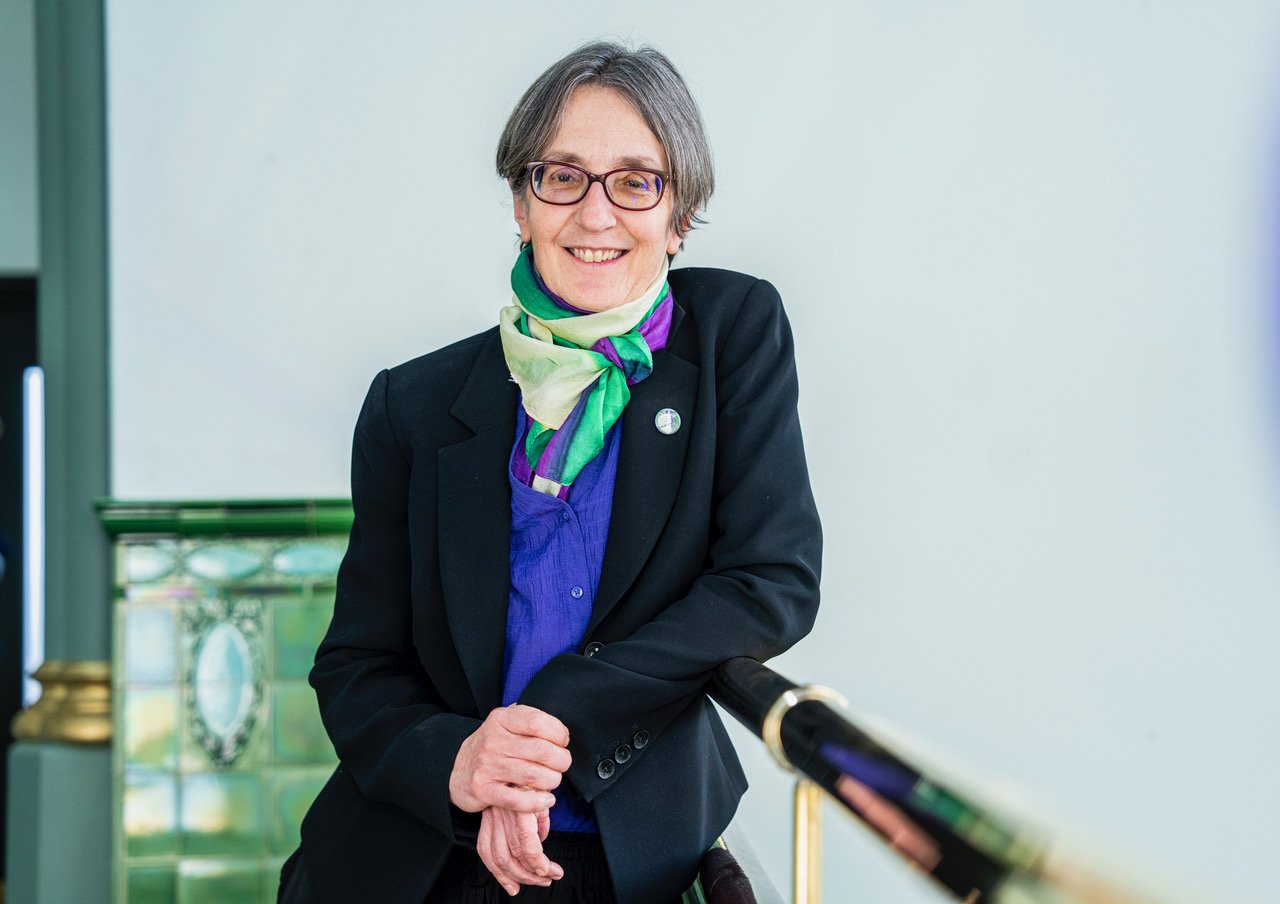Helen Pankhurst: Continuing the Fight for Women’s Rights and Health Advocacy
At Mission Science, we are deeply committed to advancing women’s health advocacy and communication, and few voices are as influential in this space as Dr Helen Pankhurst. As a women’s rights activist, author, and the great-granddaughter of suffragette leader Emmeline Pankhurst, Helen has spent her career pushing for gender equality, focusing on political engagement, health rights, and the power of effective communication in advocacy.
In this exclusive interview, Helen shares her thoughts on the ongoing fight for gender equality, the role of communication in addressing women’s health issues, and the power of creative storytelling to break taboos.
Dr Helen Pankhurst: a local, national and international women’s rights’ activist and coalition convenor, academic, university chancellor, international development worker, author and speaker.
How do you balance the legacy of your great-grandmother, Emmeline Pankhurst, with your own individual activism for women's rights?
“The two are very much connected. As much as possible, I use the link to the past in the activism of today – see Centenary Action and GM4Women as examples. This has been less the case for the international work, but in this example, there is the heritage of my grandmother Sylvia and her activism for Ethiopian independence.”
Emmeline Pankhurst: best known as an activist and leader of the suffragette movement, campaigning for women's right to vote (enfranchisement).
Over the years, how has the fight for gender equality shaped today's conversations on menstrual hygiene and sanitation?
“I think it’s all connected and about women’s voice, their agency, their experiences, their priorities, etc. When only men or mainly men were the ones in charge of policy-making, issues such as menstrual hygiene were rarely on the agenda, and sanitation more broadly was not prioritised. As soon as enough women are in the room, things start to change.
One challenge, however, is around talking about women’s specific experiences – making these visible and prioritised without reducing women's needs to just ones around their body or assuming all women have the same interests and concerns. Likewise, the challenge of men understanding the world from the perspective of women and understanding change to appreciating the benefit to society more generally when there is a reconfiguration and both a male and female sense change to lens to policy and practice.”
In what ways can better communication help prevent gender-based violence and support survivors?
“Gender-based violence thrives where there is poor communication, in dark or isolated spaces. Connection, i.e., communication, can help prevent or make visible the violence – it can result in violence being called out. It can be maybe change to is one of many steps in the journey to survival and safety.
Connection, communication, and commitment are all absolutely critical tools in all stages of gender-based violence and policies to address this.”
What gaps exist in how we talk about women's health, and how can creative communication tools like animation drive change?
“Parts of the reproductive cycle are still taboo in many circles – e.g., around menstruation, miscarriage, and menopause. It is also not just about how we talk but also how we support. Creative communication such as animation could be invaluable in providing information in a way that’s more likely to be absorbed and shared. It can also be targeted to reach particular audiences, it can also be used where there are language or literacy barriers. Creative communication tools can increase understanding, education, awareness, and empathy.”
In your opinion, what is the biggest misconception about women’s health that you encounter?
“Probably simplistic universalisation – we are all so different. Our health experiences vary so much at each stage of our lives. Also, crucially we tend to assume progress is linear and permanent. Maybe not a misconception but the reality is that we have limited knowledge because of insufficient research on women’s health.”
What has been the biggest challenge or obstacle that you've faced while pursuing women’s health rights activism, and how did you overcome it?
“I have for the most part campaigned on women’s rights per se and then talked about the linkages between politics, economics, social attitudes, health, etc. My experience is that the minute you unpick women’s experiences in a particular area, it’s easier to see how much we still have to do and how interconnected the issues are.”
What are some of the best ways to engage younger generations in advocating for women’s health rights?
“Supporting peer-to-peer learning at all stages of people’s lives, encouraging leadership from within – of girls and women with particular stories to tell, communicating through social media and easily sharable infographics, using humour. Facilitating conversations for men and boys as well.”
How do you stay motivated in the face of setbacks or challenges in your advocacy work?
“Knowing that it’s always been hard and that what’s needed is persistence and resilience. Doing the work with others and not alone – the power and fun of campaigning with others.”
And finally, are there any upcoming initiatives or projects that you’re particularly excited about?
“The work with Centenary Action encouraging political engagement and addressing the barriers to women in politics (including making connections between women in business and women in politics) and the work of GM4Women in Greater Manchester.”
Helen Pankhurst’s insights reaffirm the critical role of communication, advocacy, and persistence in driving real change for women’s health rights. At Mission Science, we believe that creative storytelling and evidence-based communication can challenge misconceptions, empower communities, and ensure that no aspect of women’s health is left in the shadows. Through ongoing collaborations with activists like Helen, we aim to continue amplifying the voices that push the conversation forward and create lasting impact.



